Abstract
Peters, John M., Murphy, Raymond L. H., and Ferris, Benjamin, G., Jr. (1969).Brit. J. industr. Med.,26, 115-120. Ventilatory function in workers exposed to low levels of toluene diisocyanate: a six-month follow-up. Thirty-four workers exposed to toluene diisocyanate during production of polyurethane foam were examined with a respiratory questionnaire and tests of ventilatory capacity. The tests of pulmonary function were conducted on Monday morning and afternoon and on Tuesday morning and afternoon. Twenty-eight of these 34 workers had been examined with the same tests six months earlier. On Monday a mean change in the one-second forced expiratory volume (F.E.V.1·0) of –0·16 l. occurred that did not return to the baseline value (Monday a.m.) on Tuesday morning. A statistically significant decrease in all the measurements of ventilatory capacity except the forced vital capacity occurred over the six months in the 28 workers. The F.E.V.1·0 fell an average of 0·14 l. and flow rates at 75%, 50%, 25%, and 10% of vital capacity also decreased significantly. There was a highly significant correlation coefficient (r = 0·72) between one-day changes in F.E.V.1·0 (measured six months earlier) and six-month changes in F.E.V.1·0. Workers with respiratory symptoms (cough and/or phlegm) demonstrated greater falls in F.E.V.1·0 than did asymptomatic workers.
All air concentrations of toluene diisocyanate measured during this study were below the threshold limit value (0·02 p.p.m.).
Full text
PDF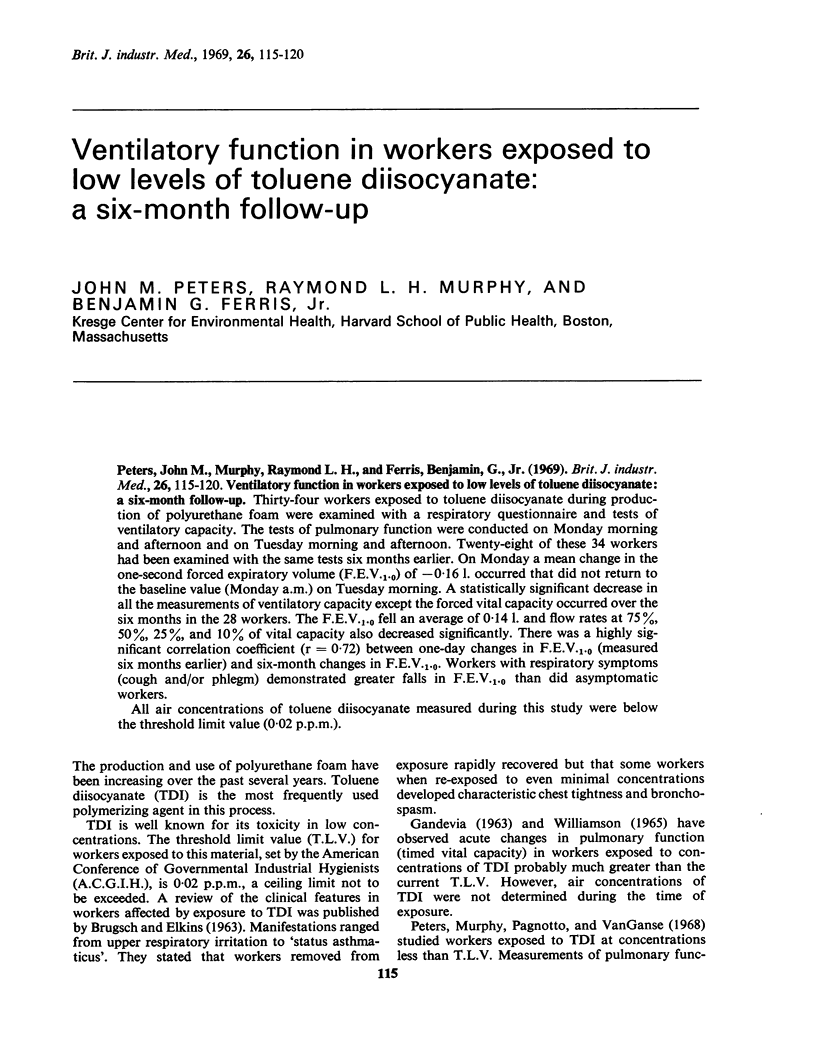
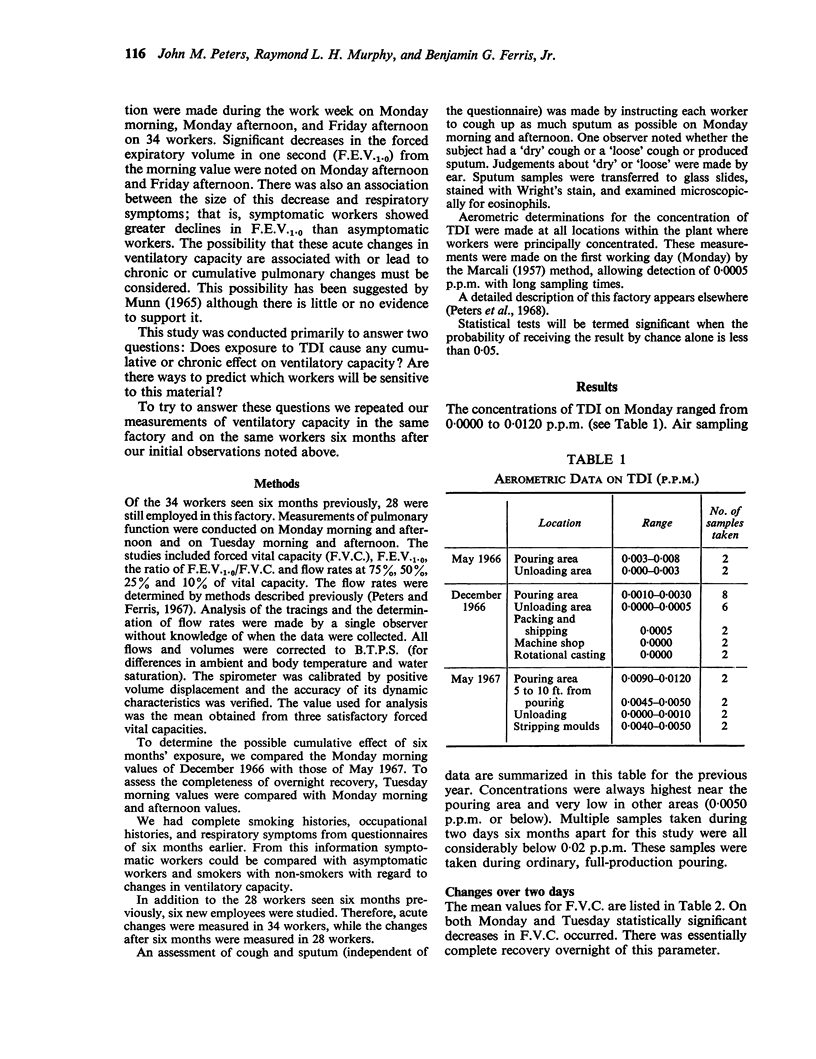
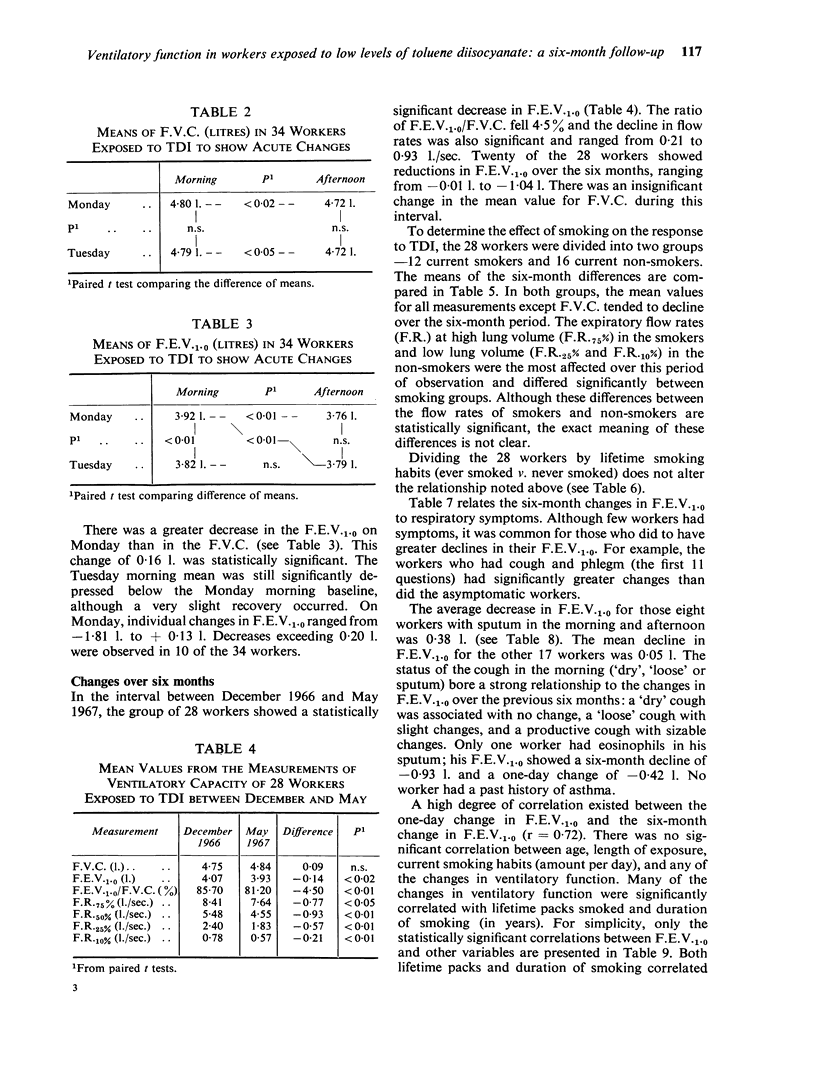
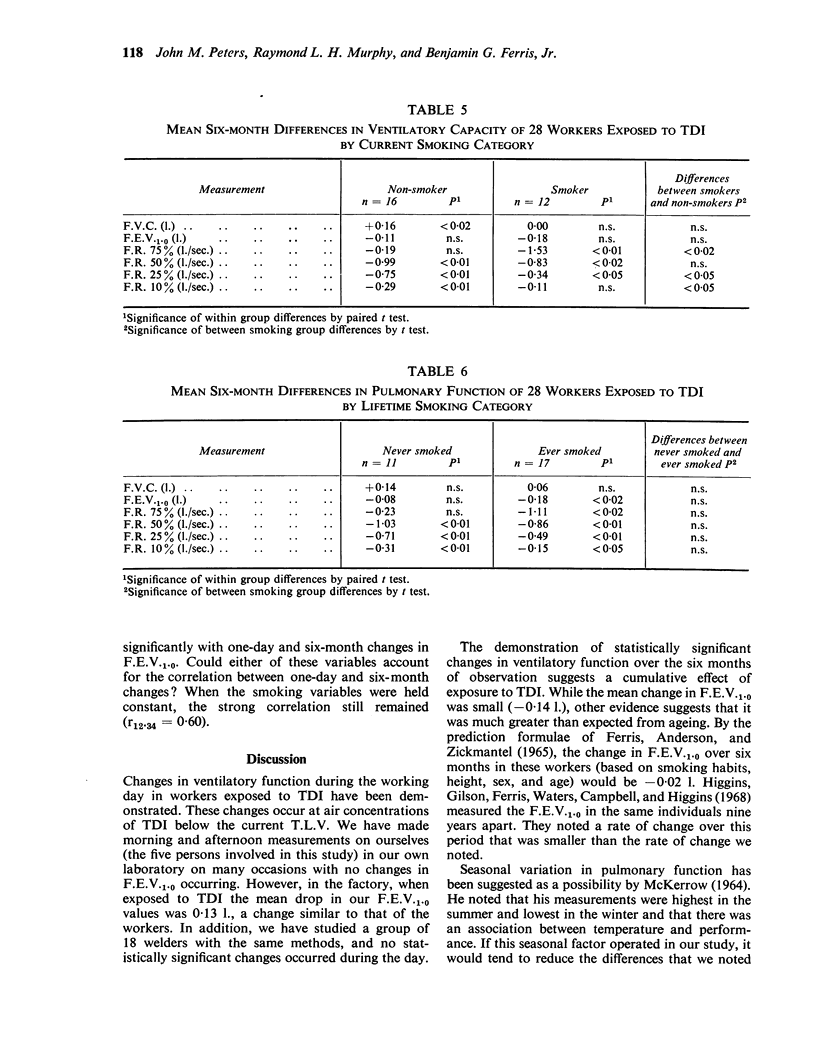

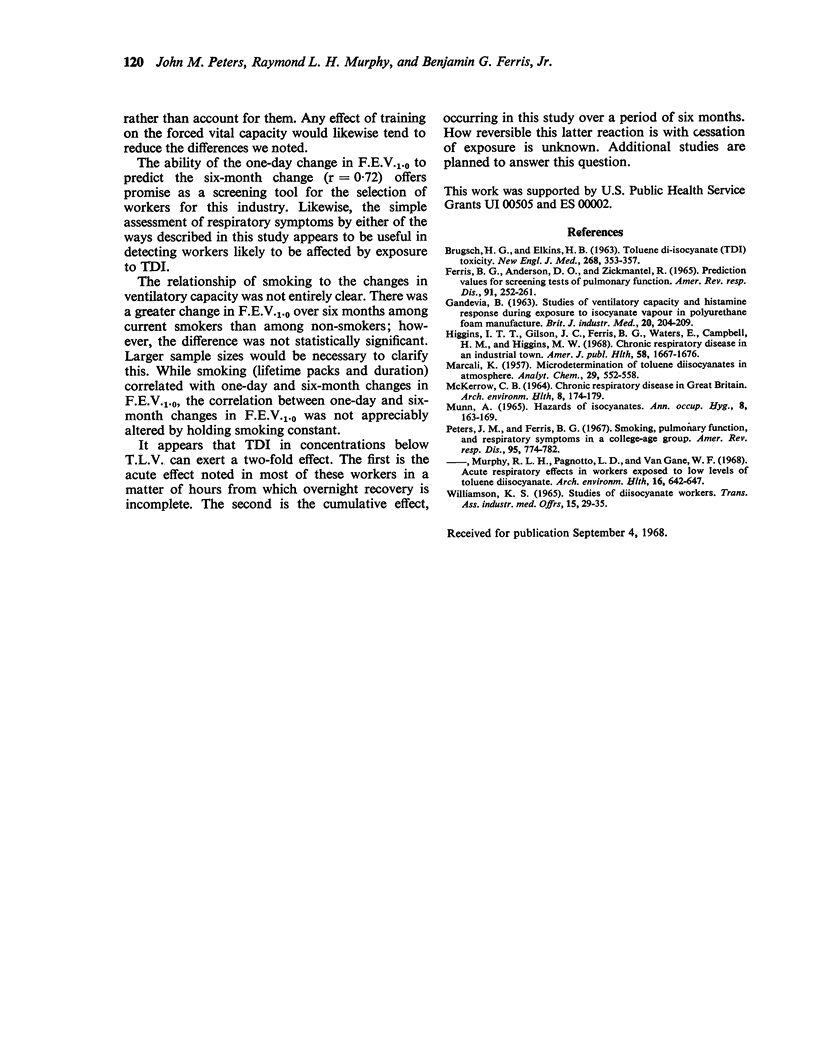
Selected References
These references are in PubMed. This may not be the complete list of references from this article.
- BRUGSCH H. G., ELKINS H. B. Toluene di-isocyanate (TDI) toxicity. N Engl J Med. 1963 Feb 14;268:353–357. doi: 10.1056/NEJM196302142680705. [DOI] [PubMed] [Google Scholar]
- FERRIS B. G., Jr, ANDERSON D. O., ZICKMANTEL R. PREDICTION VALUES FOR SCREENING TESTS OF PULMONARY FUNCTION. Am Rev Respir Dis. 1965 Feb;91:252–261. doi: 10.1164/arrd.1965.91.2.252. [DOI] [PubMed] [Google Scholar]
- GANDEVIA B. STUDIES OF VENTILATORY CAPACITY AND HISTAMINE RESPONSE DURING EXPOSURE TO ISOCYANATE VAPOUR IN POLYURETHANE FOAM MANUFACTURE. Br J Ind Med. 1963 Jul;20:204–209. doi: 10.1136/oem.20.3.204. [DOI] [PMC free article] [PubMed] [Google Scholar]
- Higgins I. T., Gilson J. C., Ferris B. G., Jr, Waters M. E., Campbell H., Higgins M. W. Environmental epidemiology. IV. Chronic respiratory disease in an industrial town: a nine-year follow-up study. Preliminary report. Am J Public Health Nations Health. 1968 Sep;58(9):1667–1676. doi: 10.2105/ajph.58.9.1667. [DOI] [PMC free article] [PubMed] [Google Scholar]
- MCKERROW C. B. CHRONIC RESPIRATORY DISEASE IN GREAT BRITAIN. Arch Environ Health. 1964 Jan;8:174–179. doi: 10.1080/00039896.1964.10663647. [DOI] [PubMed] [Google Scholar]
- Peters J. M., Ferris B. G., Jr Smoking, pulmonary function, and respiratory symptoms in a college-age group. Am Rev Respir Dis. 1967 May;95(5):774–782. doi: 10.1164/arrd.1967.95.5.774. [DOI] [PubMed] [Google Scholar]
- Peters J. M., Murphy R. L., Pagnotto L. D., Van Ganse W. F. Acute respiratory effects in workers exposed to low levels of toluene diisocyanate (TDI). Arch Environ Health. 1968 May;16(5):642–647. doi: 10.1080/00039896.1968.10665121. [DOI] [PubMed] [Google Scholar]
- Williamson K. S. Studies of diisocyanate workers. (2). Trans Assoc Ind Med Off. 1965 Jan;15(1):29–35. [PubMed] [Google Scholar]


